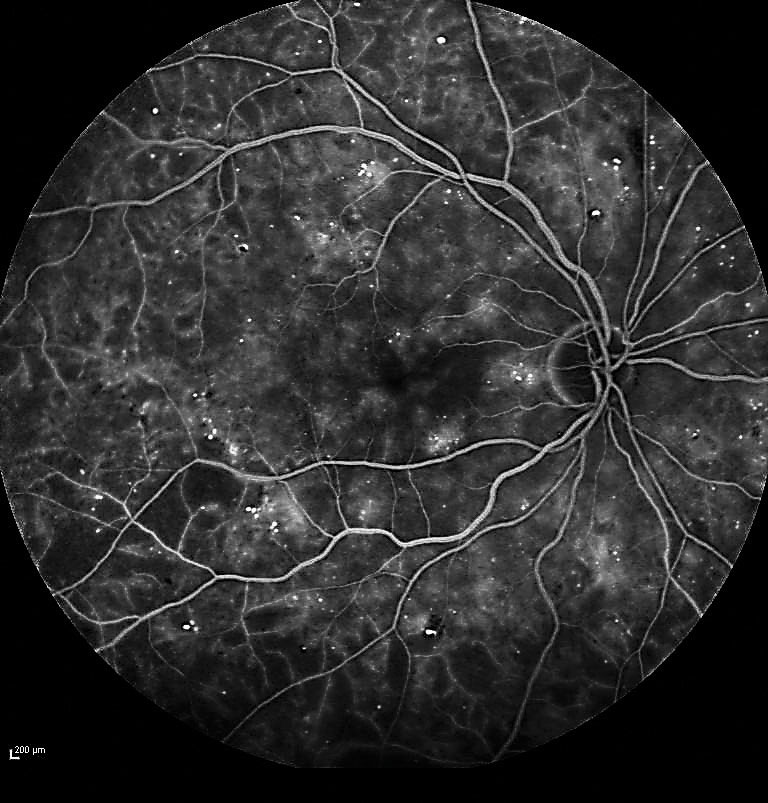 |
| Ultrawidefield imaging has been shown, yet again, to be an effective method of detecting DR. Photo: Jay M. Haynie, OD. Click image to enlarge. |
Individuals who are American Indian or Alaskan natives may have a higher burden of diabetes and complications from the condition than any other race/ethnic group in the United States, according to a new study in Ophthalmic Epidemiology. The investigation also reported that ultrawidefield imaging is a good tool to detect early diabetic retinopathy (DR) in these patients.
The research paper, which was a retrospective analysis of 53,900 patients who were examined with ultrawidefield imaging, investigated the prevalence of DR and diabetic macular edema (DME) in American Indian and Alaskan natives served by the Indian Health Services’ (IHS) teleophthalmology program. Patients were approximately 56 years old with an A1c of 68mmol/mol, and slightly more than half had diabetes for at least five years.
Prevalence of “any DR” was found in 29% of the participants, while presence of “any DME” or sight-threatening disease was detected in 3%.
In patients with mild non-proliferative DR, predominant peripheral lesions were seen about 25% of the time, with these lesions suggesting a more severe level of DR in about 9% of subjects.
Additionally, a patient’s age, gender and geographic location appeared to factor into disease rates. Both DR and DME cases increased with age, while males and individuals in the Nashville IHS area had more diabetic eye disease. Despite the high case rate in Nashville, there are fewer IHS clinics there compared with other regions. This implies that Nashville area clinics need to focus on more surveillance of diabetic eye conditions, education and recruitment of eye care specialists to mitigate significant disease, the investigators suggested.
The study’s findings may have policy implications for the IHS, since its budget is less than other federal programs, yet the diabetes burden is higher for American Indian and Alaskan natives than other race/ethnic groups in the country,the researchers said.
“Also, the location of IHS ambulatory care facilities in rural areas means access to specialty care is difficult for many patients. Thus, accurate and current measures of disease, including diabetic eye disease, are critical for planning the allocation of limited resources and for IHS budget justifications to Congress,” the study authors wrote in their paper.
The updated prevalence estimates reported in the study show that diabetic eye disease is lower than in previous decades, but the burden is still substantial to American Indian and Alaskan natives served by the IHS, they added.
Fonda SJ, Bursell SE, Lewis DG, et al. Prevalence of diabetic eye diseases in American Indians and Alaska natives (AI/AN) as identified by the Indian Health Service’s national teleophthalmology program using ultrawide field imaging (UWFI). Ophthalmic Epidemiol. November 2, 2021. [Epub ahead of print]. |

